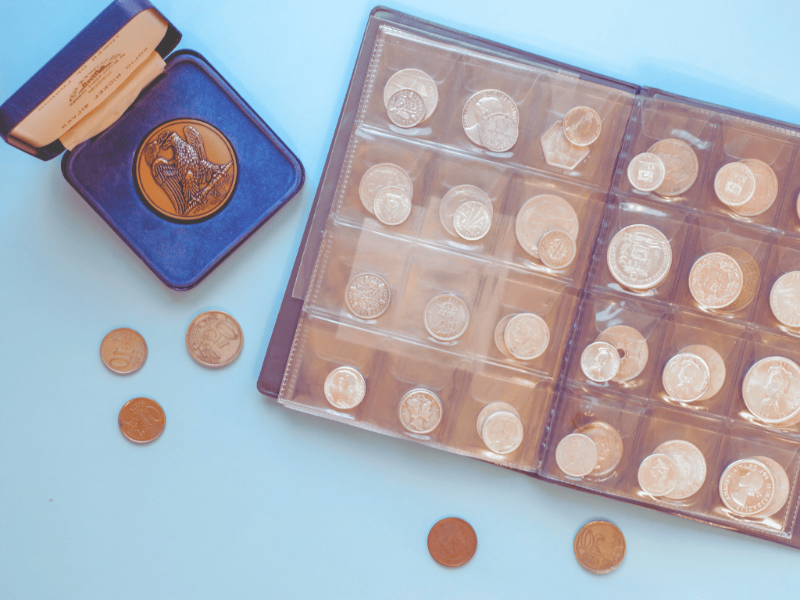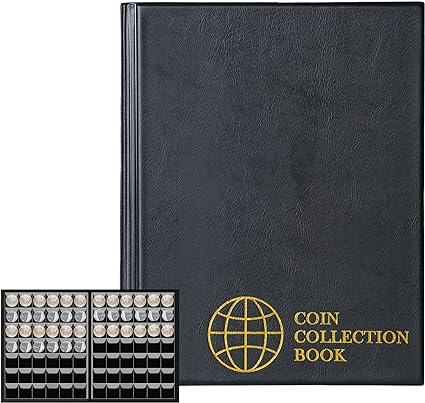
Coin collecting, also known as numismatics, is a fascinating hobby that has captivated enthusiasts for centuries.
As a collector, understanding the factors that contribute to the value of a coin is essential.
While some coins may appear similar, their worth can vary significantly.
In this comprehensive guide, we will explore the key elements that determine the value of coins, shedding light on the intricate world of numismatics.
One of the primary factors influencing the value of a coin is its mintage number.
Mintage refers to the quantity of coins produced by a particular mint in a specific year. Each mint has its own production numbers, making certain years and mint marks rarer than others. For instance, if we compare the 1909 Wheat cents minted in Philadelphia and San Francisco, we observe a stark difference in their mintage numbers.
While over 100 million Wheat cents were produced in Philadelphia, San Francisco minted only about 2.3 million. Consequently, the "S" mint cents from 1909 hold a higher value due to their scarcity.
Furthermore, different mint marks can carry additional historical significance, increasing their desirability among collectors.
For example, Morgan dollars minted in New Orleans and Carson City are generally more sought after than those from other mints.
Within a single date and mint mark, variations can be found, further impacting a coin's value.
Take the case of 1909 cents, for instance.
Initially, these coins were minted with the initials "VDB" at the bottom of the reverse. However, the decision was made to remove the initials shortly after production began.
As a result, the 1909 cents bearing the "VDB" initials have become more valuable due to their lower mintage numbers. While the "VDB" variety is well-known, there are several lesser-known variations that can easily go unnoticed by casual collectors.
These lesser-known varieties, such as the S over horizontal S and doubled die obverse, possess relative scarcity, driving higher prices amongst dedicated collectors.

We earn a commission if you make a purchase, at no additional cost to you.
The popularity of a certain coin directly affects its market value. Coins that attract a larger number of collectors tend to be more expensive.
For instance, Morgan and Peace dollars, which are iconic series in American history, often command higher prices compared to other series of similar rarity. However, collector interest in various coin series can be cyclical.
Coins like buffalo nickels and Mercury dimes experience fluctuating popularity over time, with no clear explanation for these shifts.
On the other hand, there are collectible coins, such as half cents, that consistently maintain lower popularity, resulting in comparatively lower prices.
Ultimately, the principle of supply and demand plays a significant role in determining the value of a coin.
The condition of a coin, often referred to as its grade, is another crucial factor that affects its value. The level of wear and tear a coin has endured directly impacts its desirability among collectors.
Coin grading is a meticulous process that involves assessing the coin's condition and assigning it a grade on a scale from 1 to 70. A coin graded as "Poor 1" exhibits heavy circulation and minimal design visibility, while a coin graded as "MS 70" denotes a perfectly struck, uncirculated piece.
Coins with higher grades, indicating better condition, generally command higher prices.
It is important to note that coins of the same date, mint, and variety can have varying grades, leading to significant differences in their market value.
When coins are sent for grading, certain strike characters and special designations can be indicated. For example, mint-state pennies that have not seen any circulation receive colour designations such as Brown, Red-Brown, or Red, depending on the amount of original red colour and luster they retain.
Coins with a significant amount of their original colour often fetch higher prices.
Additionally, coins like Standing Liberty quarters can receive the "Full Head" designation if Liberty's head is well-struck, while Mercury dimes can be designated as having "Full Bands" if the bands on the reverse are fully divided. These strike conditions and special designations add to the overall value of the coin.
While many assume that the age of a coin directly correlates with its value, this is not always the case. Although older coins can be rare and valuable, age alone does not guarantee significant collector value.
For instance, certain ancient Roman and Greek coins, despite their antiquity, may have little collector demand and can be purchased at relatively low prices.
The age of a coin may contribute to its rarity, but it is not the sole determinant of its value.
Other factors, such as mintage numbers, condition, and demand, play more significant roles in assessing a coin's worth.
Beyond the intrinsic characteristics of a coin, its historical significance can affect its value.
Coins that played a role in significant historical events or bear the likeness of influential figures may carry additional value.
For example, commemorative coins issued to mark significant anniversaries or events often attract collectors and enthusiasts who value their historical context.
Similarly, coins associated with famous individuals or important historical periods may command higher prices due to their historical significance.

We earn a commission if you make a purchase, at no additional cost to you.
Rarity and scarcity are crucial factors in determining the value of a coin. Coins with low mintage numbers or limited availability in the market tend to be more valuable.
The scarcity of a coin can be influenced by various factors, including the number of surviving specimens, losses due to theft, melting, or other factors, and the overall demand among collectors.
Coins that are difficult to find or are seldom encountered in the market are likely to have higher values due to their rarity and desirability.
The design and artistry of a coin can also contribute to its value. Coins with intricate designs, exceptional craftsmanship, or unique artistic elements are often more sought after by collectors. The aesthetic appeal of a coin can enhance its desirability, especially among those who appreciate the artistic aspects of numismatics.
Coins that exhibit exceptional design or possess artistic qualities that set them apart from others of their kind can command premium prices in the collector's market.
The material composition of a coin can play a role in determining its value. Precious metal coins, such as gold or silver, often carry higher intrinsic value due to the inherent worth of the metal itself.
The market value of these coins fluctuates with the price of the underlying precious metal.
Additionally, coins made from rare or unique materials, such as platinum or palladium, may have higher values due to their scarcity and desirability among collectors.
The interplay between rarity and demand is a crucial aspect of determining a coin's value. While rarity contributes to a coin's scarcity and potential value, it is the demand among collectors that ultimately drives prices.
Coins that possess a combination of rarity and high demand can command significant premiums in the market. Conversely, coins that are rare but lack significant collector interest may not achieve substantial values.
The delicate balance between rarity and demand is a dynamic factor that influences the numismatic market.
For individuals new to coin collecting or those seeking to expand their collections, seeking guidance from experienced numismatists or reputable coin dealers is invaluable. These experts possess extensive knowledge of the market, trends, and factors that influence coin values.
They can provide insights on specific coins, offer advice on building collections, and help navigate the complexities of the numismatic world.
Consulting with experts ensures that collectors make informed decisions and avoid potential pitfalls in the pursuit of valuable coins.
To determine the value of your coins, consult numismatic guides, online resources, or professional coin appraisers. Consider factors like rarity, condition, and demand. Utilise auction platforms or coin dealers for selling or obtaining valuations.
Coin collectors seek coins with rarity, historical significance, exceptional condition, and aesthetic appeal. They value coins with unique features like errors, mint marks, or limited mintage. Rarity, condition grading, and demand dictate a coin's value in the numismatic market.
In conclusion, understanding the factors that contribute to a coin's value is crucial for any coin collector.
Mintage numbers, variety, popularity, condition, historical significance, rarity, design, material composition, and the delicate interplay between rarity and demand all play significant roles in determining a coin's worth.
By delving into these factors and seeking expert guidance, collectors can navigate the intricate world of numismatics and build collections that hold both financial and historical value. Embark on your journey of coin collecting, exploring the depths of this captivating hobby and uncovering the hidden treasures within the numismatic realm.

Stuart is an expert in Property, Money, Banking & Finance, having worked in retail and investment banking for 10+ years before founding Sunny Avenue. Stuart has spent his career studying finance. He holds qualifications in financial studies, mortgage advice & practice, banking operations, dealing & financial markets, derivatives, securities & investments.





Our website offers information about financial products such as investing, savings, equity release, mortgages, and insurance. None of the information on Sunny Avenue constitutes personal advice. Sunny Avenue does not offer any of these services directly and we only act as a directory service to connect you to the experts. If you require further information to proceed you will need to request advice, for example from the financial advisers listed. If you decide to invest, read the important investment notes provided first, decide how to proceed on your own basis, and remember that investments can go up and down in value, so you could get back less than you put in.
Think carefully before securing debts against your home. A mortgage is a loan secured on your home, which you could lose if you do not keep up your mortgage payments. Check that any mortgage will meet your needs if you want to move or sell your home or you want your family to inherit it. If you are in any doubt, seek independent advice.